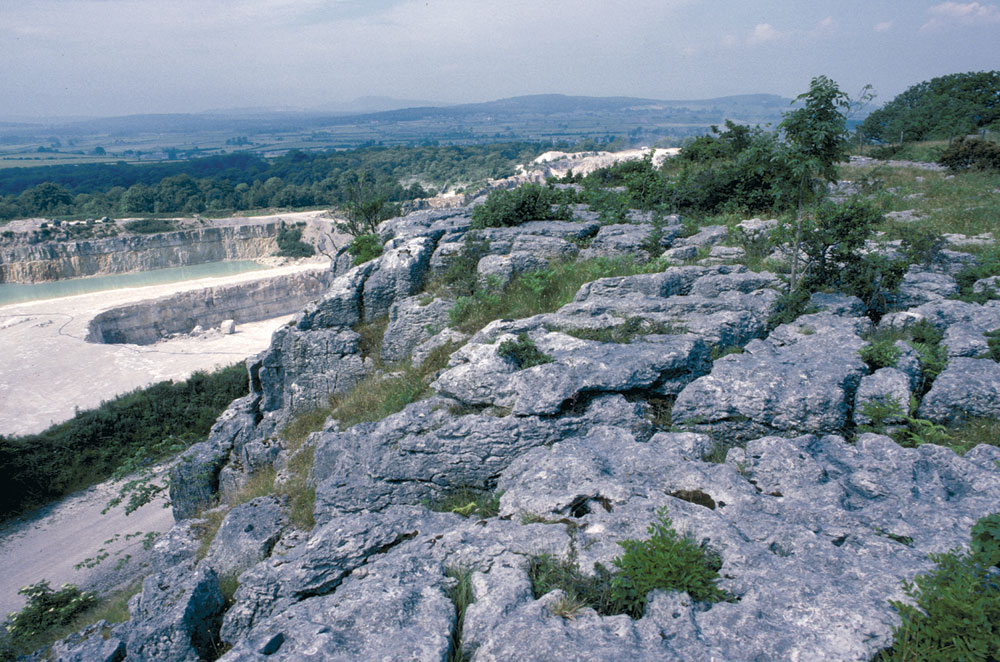Conservation Of Geodiversity

Realizing the industry’s potential
Geodiversity can be defined as the variety of rocks, fossils, minerals, landforms and soils that occur on the Earth, along with the natural processes that shape the landscape. Great Britain has a particularly rich and varied geodiversity with many sites being of international scientific importance. Great Britain was also the birthplace of the geological sciences, and many terms for the division of geological time and rock formations in international use today were defined from British geology. In addition, this country’s geology records millions of years of history during which time continents have moved, climates have changed, sea levels have risen and fallen, and creatures such as the dinosaurs have appeared, evolved and eventually become extinct. An understanding of this past climate change helps society to comprehend and plan for the environmental changes it undoubtedly faces in the future.
It is well documented that the study of geology has, since its earliest days, drawn heavily on rocks exposed in quarries and pits, and that mineral extraction continues to play a vital role in facilitating an understanding of geology. This is particularly true in inland lowland areas where a lack of any natural rock exposure means that quarries often provide the only insight into the geology of the area. It is also worth noting that many fascinating fossil specimens, including dinosaur bones which are now on public display in museums across the country, were discovered in quarries. Additionally, disused quarries where rock faces have been retained continue to provide an important resource for the education of future geologists. Mineral extraction has undoubtedly provided many of the most important geological localities in Great Britain, a fact reflected in the number of quarries and pits designated as nationally important geological SSSIs (Sites of Special Scientific Interest) or RIGS (Regionally Important Geological/ Geomorphological Sites). English Nature and the wider geological community are keen to see that every effort is made to conserve this fascinating resource, exposed as a result of mineral extraction.
Although the minerals industry has already achieved a great deal in terms of geological conservation and undoubtedly does far more good than harm, there is still scope to do more. Continued effort to avoid damage to finite, irreplaceable geological features such as limestone pavements, cave systems, mineral veins or glacial deposits (eskers etc) is needed. Additionally, important geological features are still regularly lost to backfilling or to a restoration or after-use that does not accommodate conservation of geodiversity. In many cases, increased understanding within the minerals extraction industry about the importance of conserving geodiversity, and of the opportunities to gain positive publicity from promoting conserved geological features, is all that is needed, and should result in more conservation schemes coming forward. The desire of some within the minerals industry to do more for the conservation of geodiversity has certainly been hindered by a lack of widely available guidance on good practice. To meet this need, English Nature, the Quarry Products Association and the Silica and Moulding Sands Association, through the long-established Minerals Industry and Nature Conservation Forum, have produced guidance on the role of the minerals industry in conserving geodiversity. This handbook, ‘Geodiversity and the minerals industry — conserving our geological heritage’, is aimed primarily at the industry but is also very relevant to mineral planners, geologists and all those involved in geological conservation. The handbook complements the guidance produced by the Forum in 1999 on the conservation of biodiversity, ‘Biodiversity and minerals — extracting the benefits for wildlife’.
The illustrated handbook was launched by BBC newscaster Peter Sissons and English Nature’s chief scientist, Dr Keith Duff, at the Quarry Products Association’s ‘Quarry Showcase’ restoration awards event in London in March 2003. It provides an easy-to-read document that highlights the opportunities available to the minerals industry for the conservation of geodiversity.
Having first defined geodiversity and its relevance to the industry, the handbook goes on to identify the opportunities arising for geological conservation during the planning, operating and restoration stages of minerals extraction. It then concludes with a good-practice checklist and provides links to key organizations involved in geological conservation, and to sources of further information. This is probably the first-ever publication to focus on the role of the minerals industry in conserving geodiversity, and as such it is anticipated that there will be considerable interest in the UK, in Europe and further afield.
Copies of the handbook are available, free of charge, from the Quarry Products Association and English Nature. Contact the QPA on tel: (020) 7730 8194; or the English Nature Enquiry Service on tel: (01733) 455100.
The author, Dr Colin Prosser, is head of geological conservation with English Nature


